Doulas are an increasingly welcome presence for women in the throes of childbirth. The school’s Birth Companions Program is preparing students to fill this unique role in the delivery room.
Written by Joanne Cavanaugh Simpson
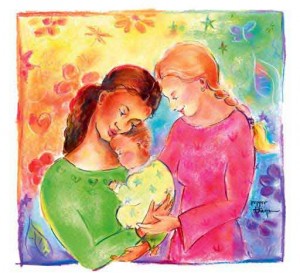 Lilly Schott holds a pink-swaddled baby in her arms, cooing quietly and congratulating the mother. “Que linda es,” Schott says. How pretty she is.
Lilly Schott holds a pink-swaddled baby in her arms, cooing quietly and congratulating the mother. “Que linda es,” Schott says. How pretty she is.
In a tidy apartment in Columbia, Maryland, the child’s mother, Susan Villanueva, beams at Schott. The two women share a special bond: Schott helped Villanueva give birth to her daughter just nine days before.
The scene that day wasn’t so peaceful.
At Howard County General Hospital, when strong contractions caused Villanueva to call out for an epidural to relieve the pain, the laboring woman briefly bypassed her husband to hold onto Schott for support—putting the young woman into a head lock.
Schott was not in the delivery room as a midwife, a doctor, or even a nurse. A nursing student at the Johns Hopkins University School of Nursing, Schott was a birth companion, or doula—a woman who gives one-on-one support to mothers during childbirth.
In early June, Schott spent more than nine hours alongside Villanueva, helping her walk during labor, getting her into the shower for relief, and telling her, again and again, how well she was doing. Afterward, she translated for the Honduran immigrant, making sure that a famished Villanueva got a sandwich with ham and mayonnaise, and chocolate cookies.
“She knows what’s going on,” Villanueva says, “She was with me the whole time even though I was squeezing her hand hard. It was very good to have her help.”
The Birth Companions Program, a service of the Johns Hopkins School of Nursing, is also a training ground for nursing students who want to focus on maternity nursing, community health, doula services, or essentially, any nursing care that emphasizes support and advocacy for patients, especially women.
“Part of the mission of the program is to educate nursing students and to give them an opportunity to provide the emotional care that, as nurses, they might not always have the opportunity to do,” notes Elizabeth Jordan, DNSc, RNC, nursing school instructor and co-director of the Birth Companions Program. “Students really don’t know how powerful it can be to hold a woman’s hand, how powerful it is to be there with someone.”
The demands of medical technology and higher patient care loads mean that nurses increasingly spend less time one-on-one with patients, Jordan notes. According to recent studies, a typical nurse in labor and delivery can spend just 10 percent of her time with any particular patient—about one hour of a 10-hour labor. Jordan, who worked for 18 years in maternal and newborn nursing, notes: “Yet, it’s the caring aspect that attracts students to nursing.”
How to provide that care is a central element of the program’s elective two-credit course, Community Perspectives on the Childbearing Process. Twenty hours of instruction—16 of which are taught by a doula trainer certified by the Doulas of North America (DONA)—focus on theories of maternal nursing, community health nursing, and the use of supportive techniques during childbirth. Such techniques include massage, breathing methods, the use of different positions and aids such as cold compresses, hot showers, and birthing balls. Students also learn to communicate with doctors and nurses about a mother’s birth plan, especially whether or not she wants pharmaceutical pain relief and when. Doulas themselves provide no clinical or medical services.
As part of the course, each student acts as a birth companion to at least one client during labor. Students also visit mothers before and after the birth, focusing on prenatal and postpartum health, infant care, and breastfeeding. They also identify other community health resources for women, such as WIC, the federal nutrition program for women, infants, and children. About 60 students enroll annually.
The doula service at the school is primarily student-run, as it has been since it was founded at Hopkins in 1997. Nursing students enrolled in the course also maintain a telephone referral line in English and Spanish, meet biweekly to assign new clients, maintain contact with community referral agencies, and attend brown bag lunches to discuss such issues as doula certification, nurse-midwifery as a career, and international experiences with childbirth.
Most of the deliveries that doulas attend take place at Hopkins’ Bayview Medical Center, the University of Maryland Medical Center, Mercy Medical Center, and Howard County General Hospital.
Hopkins’ Birth Companions Program focuses primarily on clients with special needs, especially low-income women or non-English-speaking immigrants. The program serves from 40 to 50 women a year, nearly half of them Hispanic. “A good number of the women we serve are young or don’t speak English as a primary language,” says Shirley Van Zandt, MSN, MPH, CRNP, the program’s co-director, and a School of Nursing instructor specializing in community health. “From a community point of view, many of the clients really benefit from the advocacy role of a doula. For some, it is their first experience of someone speaking out for them in a way that meets their needs.”
Doulas (originally a Greek word meaning “woman’s servant”) apparently also provide a medical benefit.
Dozens of studies have shown that support from doulas, or similar birth companions, can shorten labor and reduce the use of medical intervention during childbirth, including epidurals, labor stimulating drugs, and Caesarean births. In 1999, for example, researchers at Case Western Reserve University School of Medicine compared Caesarean rates for women who were supported by doulas during labor vs. those who had epidurals. Their study found that women who had the continuous support of doulas ended up getting Caesareans only about 3 percent of the time in contrast to a 15.5 percent rate among women who had epidurals.
In other clinical trials cited by pediatrician Marshall Klaus, a DONA founder, in Mothering the Mother, the presence of a doula reduced the overall Caesarean rate by 50 percent and request for epidurals by 60 percent—statistics cited in a March/April 2001 Health Care Perspectives article authored by Jordan, Van Zandt, and the program’s DONA-certified trainer, Michele Oseroff, MSW, RN, CD.
The number of doulas nationwide, meanwhile, is mushrooming. According to DONA’s web site, more than 5,000 birth and postpartum doulas are certified nationwide, compared to about 1,000 just a few years ago. (Postpartum doulas provide mother and infant care, as well as food preparation or house cleaning in the chaotic weeks after a baby’s birth.) “The whole movement has really taken off,” says Oseroff, a nurse who also offers a private doula service called Baltimore Doula Care.
In recent years, as Caesarean rates have increased (rates now range from 25 to 38 percent depending on the hospital), women are seeking alternatives to clinical approaches, Oseroff and others say. Couples also move far from family and friends, finding themselves away from moms and sisters who traditionally were on hand to offer support during and after birth. “Women have always been helping women in labor,” notes Oseroff. “I believe this is really a return to the way birth should be. It is more of a social childbirth experience.”
Across the country, doula services are especially popular in immigrant communities, including among Hispanic women in Denver, Colorado, and Somali émigrés settling in Minneapolis, Minnesota. Language barriers, as well as cultural issues, have prompted such demand. “Internationally, there is much more acceptance of birth as a natural process,” Jordan says. “Having a home birth or giving birth with a midwife in a village is more acceptable.” In such cases as well, birthing women are surrounded by mothers, sisters, aunts, husbands, or neighbors.
Overall, the medically oriented approach typical to the United States can be a culture shock: “One role of the birth companion is to educate women about what it is going to be like to give birth in this country, so that women are not as fearful,” Jordan says. “There is a better understanding of some of the care being provided and the decisions being made.”
Schott, a student leader in the Hopkins Birth Companions Program, is fluent in Spanish, having studied in Guatemala (many of the students speak Spanish or take a course in medically oriented Spanish). Schott also witnessed and assisted in more than 60 births when she lived with a midwife in Mali, in West Africa, as part of a research grant a few years ago. Graduating from the school this past July, Schott has already landed a job as a labor and delivery nurse in Los Angeles. She says her experiences assisting women in childbirth have influenced how she looks at patient advocacy, a key goal for the program’s students, according to Jordan and Van Zandt.
“What we do is very independent,” Schott says. “You have your client, and you get to be involved in something in her life that she will absolutely never forget. You help them make it what they want it to be. It’s a privilege.
“And I think it’s amazing,” she adds. “It never fails to get me. I’m a total sap. I could stay up all night and be really tired but it’s all worth it for such a great moment—seeing a baby born. It is a totally unique experience.”
Schott’s background is similar to that of the students who launched the Hopkins Birth Companions Program in 1997. “Mostly we were a bunch of Peace Corps volunteers in the community health track who wanted to get involved with underserved women,” says alumna Stephanie Rhodes, ’98, RNC, CNM, now a midwife in private practice at Kathleen Slone & Associates in North Baltimore. Establishing the program, which at first served mostly women living in East Baltimore, wasn’t easy. “It was a lot of hard work. We had to go through a lot of protocols and we just banged our heads against the wall,” Rhodes says. “Not all of the doctors wanted us there.”
As part of the program’s training, students role-play possible conflicts with doctors or nurses, some of whom might recommend epidurals or other interventions over natural childbirth approaches. Among other issues doulas work through: not imposing their own ideals of “the perfect birth” on patients.
Overall, the experience teaches students patient-care skills that help them in their careers, whether they go into maternity nursing, pediatric nursing, or work in intensive care units; according to a survey of program alumni led by Jordan and Van Zandt—part of their ongoing study of outcomes for mothers and nursing students in the program—nearly 90 percent said the doula training helped them secure jobs. “It’s a unique skill,” Jordan says. “People are fascinated by it.”
“For the mothers,” Van Zandt adds, “the most important piece is that someone dealt with them kindly and cared about them. Sadly, that doesn’t happen as much in the health care system as it should. The students stay up all night, they call and see you after the baby is born. That level of caring is pretty powerful.”
On a sunny afternoon in June, Schott handed back a tiny Melissa Nicole Gomez y Villanueva to her mother.
Susan Villanueva, in a T-shirt and slippers, her hair tied back in a pony tail, tells Schott that her daughter, her fourth child, is eating and sleeping well.
“I’m so happy for you,” Schott says in Spanish. As she walks out of the apartment, her eyes are wet.
Joanne Cavanaugh Simpson is a Baltimore-based freelance writer and lecturer in the Johns Hopkins Writing Seminars and Advanced Academic Programs. She relied on both a birth and postpartum doula during the birth of her daughter, Chloe, now 2.
 President’s Report
President’s Report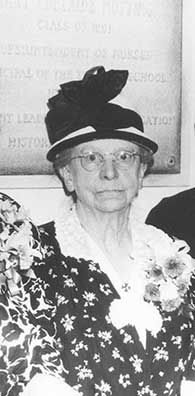 Who Is This Alumna?
Who Is This Alumna?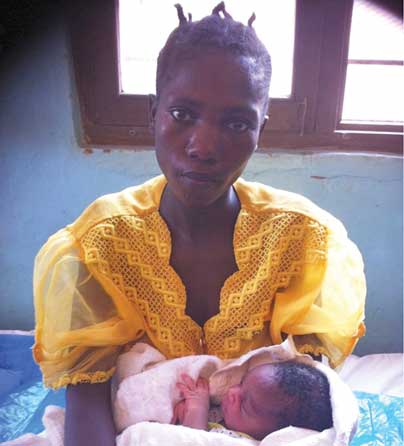 When Help is Far Away
When Help is Far Away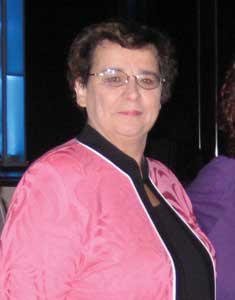 Faculty, Student, and Staff News
Faculty, Student, and Staff News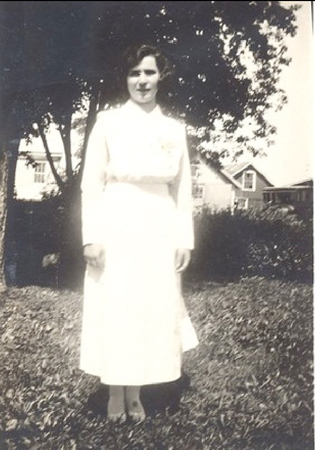 In Memory Of
In Memory Of







